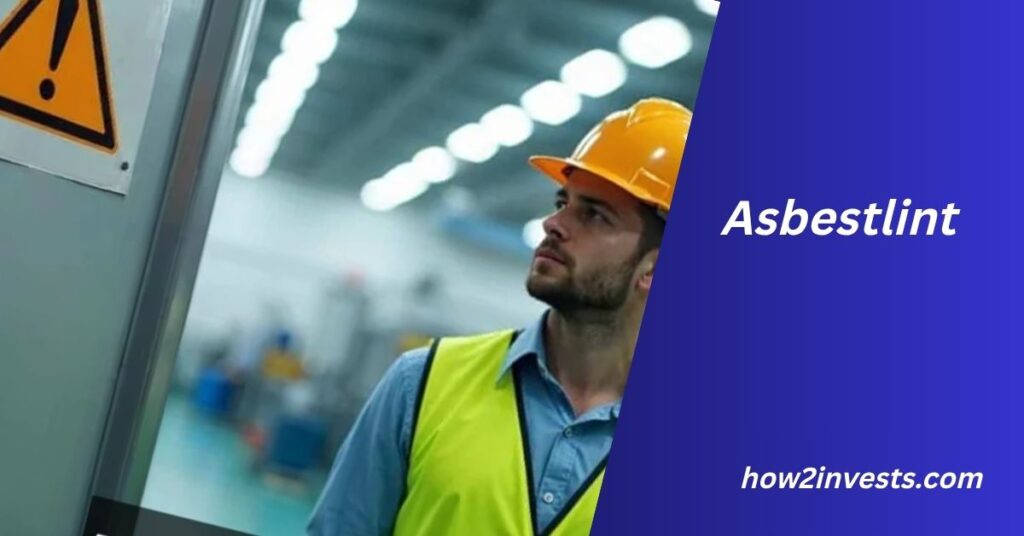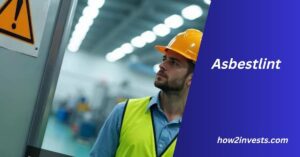Asbestlint _ Risks, Regulations, and Safe Alternatives

Asbestlint, a naturally occurring mineral, once served as an essential material for many industries due to its remarkable properties, such as heat resistance, durability, and insulation. Widely used in construction, automotive, and manufacturing sectors, asbestlint is now highly regulated due to its serious health risks. In this article, we will delve into what asbestlint is, how it was used historically, the risks associated with exposure, and the current regulations governing its use.
What is Asbestlint?
Asbestlint is part of the asbestos family, a group of six silicate minerals that have been used extensively in various industries for their unique properties. These minerals have been highly valued for their resistance to heat, fire, and electrical conductivity, as well as their tensile strength and soundproofing abilities.
Key Properties of Asbestlint
- Heat Resistance: Asbestlint can withstand extremely high temperatures without breaking down, making it ideal for use in insulation materials.
- Durability: The mineral’s resistance to corrosion and wear made it a favorite in construction, automotive, and industrial applications.
- Insulation Properties: Asbestlint provides excellent thermal and electrical insulation, making it a go-to material for industries requiring fireproof materials.
- Strength and Versatility: Its fibrous texture gave asbestlint both strength and flexibility, making it suitable for a range of uses, from insulation to brake pads in automotive manufacturing.
- Soundproofing: The mineral’s dense composition also made it a useful material for soundproofing applications, further expanding its uses.
Also Read: 5starsstocks.com Staples: Essential Goods and Services for a Strong Investment Portfolio
Historical Use of Asbestlint in Various Industries
Asbestlint has a long history of use, particularly in the construction, automotive, and manufacturing sectors. Let’s explore some of the most common applications that made asbestlint such a popular material.
In Construction
Asbestlint was widely used in buildings, especially in the mid-20th century. It was incorporated into various materials, including:
- Insulation: Asbestlint was used for insulating pipes, roofs, and walls due to its heat-resistant properties.
- Flooring and Roofing: Asbestos-cement roofing tiles and floor tiles were once commonplace due to their durability and fire resistance.
- Fireproofing: Asbestlint was often applied to structural elements, such as beams and columns, to protect buildings from fire damage.
In Automotive Parts
Asbestlint’s heat resistance made it an ideal material for:
- Brake Pads and Clutch Materials: The automotive industry heavily relied on asbestlint for brake linings and clutch materials due to its ability to withstand high temperatures.
- Gaskets: Asbestlint was also used in gaskets for engines and other heat-sensitive parts.
In Industrial Applications
Asbestlint found its place in numerous industries, where it served a variety of functions:
- Machinery and Equipment Insulation: Asbestlint was used to insulate industrial machinery, especially those exposed to high temperatures.
- Shipbuilding: In shipyards, asbestlint was used for insulation and fireproofing in ships and boats.
Health Risks Associated with Asbestlint Exposure
Despite its usefulness, asbestlint poses significant health risks when its fibers are inhaled. Over time, prolonged exposure to asbestlint can lead to serious respiratory conditions and cancers.
Health Conditions Linked to Asbestlint Exposure
- Mesothelioma: This is a rare cancer that affects the lining of the lungs, abdomen, or heart and is almost exclusively caused by asbestos exposure.
- Asbestosis: A chronic lung disease caused by the inhalation of asbestos fibers, leading to scarring of lung tissue and breathing difficulties.
- Lung Cancer: Asbestlint exposure increases the risk of developing lung cancer, especially in individuals who smoke.
- Pleural Disease: This includes thickening of the lining around the lungs, which can result in breathing issues.
Also Read: Blazertje: Versatility and Style at Its Best
The Danger of Inhaled Asbestlint Fibers
Asbestlint fibers are microscopic and can easily become airborne during the handling or disruption of asbestos-containing materials. Once inhaled, these fibers become trapped in the lungs, where they can cause long-term damage.
Regulatory Measures and the Ban on Asbestlint
As the health risks of asbestlint became better understood, countries around the world began imposing strict regulations to limit its use. The United States and other countries have banned or severely restricted the use of asbestlint in many industries.
U.S. Environmental Protection Agency (EPA) Regulations
The EPA has established stringent guidelines for handling asbestos, including asbestlint. These regulations cover:
- Asbestos Removal: Only certified professionals are allowed to remove asbestlint from buildings and other structures.
- Regulation of Asbestos in New Products: The use of asbestlint in new products is strictly limited, with exceptions for certain industries.
Occupational Safety and Health Administration (OSHA) Standards
OSHA enforces standards to limit worker exposure to asbestlint in construction, manufacturing, and other industries. This includes:
- Exposure Limits: OSHA has set limits on the amount of asbestos exposure workers can safely experience.
- Protective Measures: Employers must provide personal protective equipment (PPE) to workers and implement safety protocols to minimize exposure.
International Regulations
Many countries, particularly in Europe, have fully banned the use of asbestos, including asbestlint. In countries like Canada and Australia, asbestos has been removed from most products, with exceptions in certain niche uses where alternatives are not yet available.
Safe Handling and Removal of Asbestlint
For anyone working with or near asbestlint, it’s essential to follow strict safety guidelines to reduce the risk of exposure. Here are some key practices for handling and removing asbestlint safely.
Hiring Professionals for Asbestos Removal
- Asbestlint should only be removed by certified professionals who are trained in proper asbestos abatement procedures.
Use of Personal Protective Equipment (PPE)
- Workers handling or removing asbestos-containing materials must wear specialized PPE, including respirators, gloves, and full-body suits.
Proper Disposal of Asbestos Materials
- Asbestos waste, including asbestlint, should be carefully contained and disposed of in certified hazardous waste facilities to prevent environmental contamination.
Also Read: Aponeyrvsh: A New Wave of Physical Movement and Creative Expression
The Shift to Safer Alternatives: Replacing Asbestlint in Modern Applications
Due to the health risks associated with asbestlint, industries have been exploring safer alternatives to replace asbestos-containing materials. Many of these alternatives offer similar benefits without the associated dangers.
Alternatives to Asbestlint
- Fiberglass: Offers similar heat resistance and is a commonly used alternative to asbestos in insulation products.
- Mineral Wool: A non-toxic material that is often used in industrial and building insulation.
- Calcium Silicate: A fire-resistant material commonly used in high-temperature industrial applications.
FAQs About Asbestlint
What makes asbestlint dangerous?
Asbestlint fibers, when inhaled, can cause severe health conditions like lung cancer, mesothelioma, and asbestosis. The risk arises when the fibers are disturbed, becoming airborne and entering the lungs.
Is asbestlint still used today?
No, the use of asbestlint has been heavily regulated or banned in most countries. However, it may still be found in older buildings, vehicles, and industrial machinery.
How can I tell if a material contains asbestlint?
If you suspect that a material contains asbestlint, it is essential to have it tested by a certified professional. Never attempt to disturb or remove asbestos-containing materials on your own.
What should I do if I have been exposed to asbestlint?
If you believe you have been exposed to asbestlint, it’s important to monitor your health and consult a doctor. Early detection of asbestos-related diseases improves the chances of effective treatment.
Can asbestlint be safely removed from my home?
Yes, but it should only be removed by certified professionals who are trained in safe asbestos abatement methods. DIY removal is dangerous and not recommended.
Conclusion: A Safer Future without Asbestlint
While asbestlint was once a valuable material in many industries, its serious health risks have led to its decline in use. Modern alternatives have made it possible to avoid the dangers of asbestlint while still benefiting from similar properties. By understanding the risks, regulations, and safe handling practices, we can ensure a safer environment for future generations.




